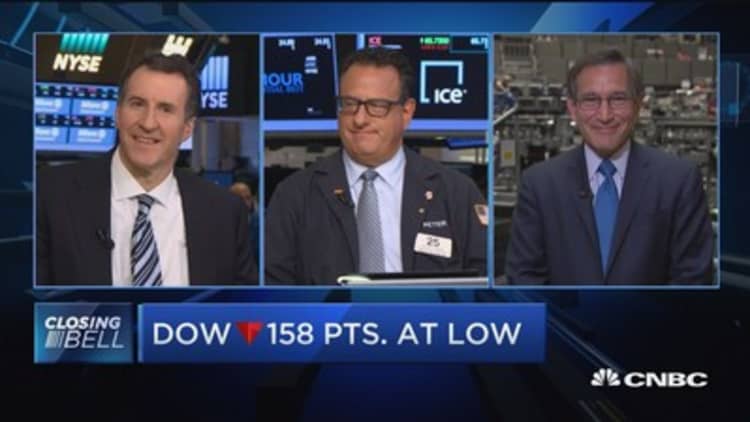
Fundstrat's Sam Doctor told investors to expect a market pullback later this year, saying the current period of low volatility is "unstable."
The quantitative strategist cited how the spread between correlations of stocks to their industry versus the rest of the market is at 99 percentile historical highs, which is often a precursor to market sell-offs.
Bottom line: The calm march to record highs this summer is masking internal turmoil within the S&P 500.
"Our new framework to understand the VIX and index volatility identifies a key divergence in the underlying correlations of stocks to their peers vs correlations of stocks to non-peers," Doctor wrote in a note to clients Friday. "Our regression model suggests this divergence could resolve over the next few months leading to a ~10% decline in the S&P."
The CBOE Volatility Index, or VIX, is a key measure of market expectations of near-term volatility conveyed by S&P 500 stock index option prices, according to the CBOE.
The quantitative strategist's six-month price target for the is 2,215, representing 10.5 percent downside from Thursday's close. His forecast is lower than the official Fundstrat firm target of 2,275 for the market benchmark, which already ranks as the most bearish target on Wall Street, according to CNBC's Market Strategist Survey.
"While volatility has been suppressed by passive fund share and quant strategies, even a moderate rise in correlations and volatility could trigger deleveraging by Risk Parity strategies," Doctor wrote. "This could set off a feedback loop leading to a correlation and/or volatility spike. This is why we think the current low volatility period is unstable."
Risk parity is an investment strategy that dynamically adjusts portfolio allocations to stocks, bonds and commodities based on the respective volatility of the asset classes. It often uses leverage to amplify returns.
During market declines "history says investors should be long large cap growth stocks — healthcare, telecoms and staples, which tend to outperform the S&P. We also believe investors should be long volatility," Doctor wrote.
WATCH: Market highs, low VIX a good sign



